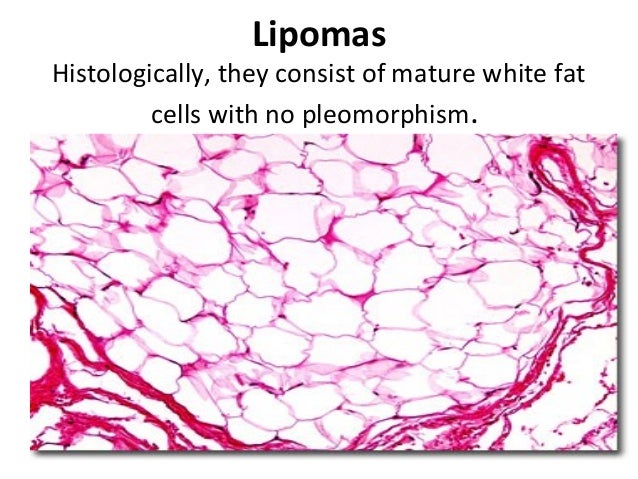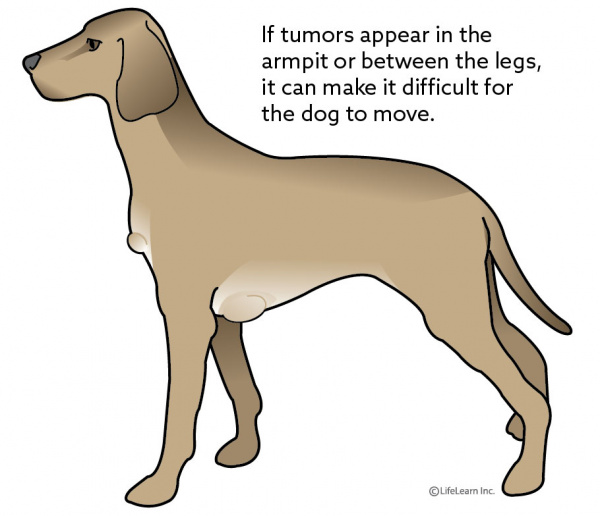
Should You Be Concerned About Fatty Tumors in Your Dog ? What is the difference between a lipoma and liposarcoma? How do I know if I have a lipoma or liposarcoma? Can liposarcoma be mistaken for lipoma? How does a lipoma differ from a lymphoma?

While liposarcomas appear in the first instance very similar to lipomas , the masses are usually less mobile, firmer, and hard to manipulate, and may cause pain to your dog as well. Demian Dressler, DVM. A liposarcoma is not a lipoma gone ba but a tumor arising from juvenile fat cells. Dogs affected by a liposarcoma can have a good prognosis, but usually need a major surgical procedure to completely remove the tumor.
My dog is really lumpy, now what? This type of cancer is quite a bit less commonly seen than many other forms. Discovering lumps and bumps on your dog can cause immediate panic. But many lumps are often benign fatty tumors called: dog lipoma. These are almost always benign (non-cancerous) and are most frequently found to arise in the subcutaneous tissues although they may also be observed in other deeper tissue regions like the abdominal organs or the intermuscular septa.

Other differentiators include the age group in which this is develope the genetic predisposition to the development of the lump, the nature and size of the lump developed and the location and the nature of symptoms associated with the lump development. Lipoma Vs Liposarcoma. Treatment for liposarcoma typically involves surgery to remove the cancer. Other treatments, such as radiation therapy, also may be used. See full list on mayoclinic.
A growing lump of tissue under your skin 2. Abdominal swelling 3. Feeling full sooner when eating 4. Doctors know that liposarcoma forms when a fat cell develops errors (mutations) in its genetic code. The accumulating abnormal cells form a mass (tumor). Several types of liposarcoma exist. Some grow slowly and the cells stay in one area of the body. Other types grow very quickly and may spread to other areas of the body.
All natural herbal remedy for those common fatty lumps called fatty lipoma s. Explore the Best Info Now. We Have Everything You Are Looking For! While your veterinarian will be able to tell the difference between a benign lipoma and malignant liposarcoma , the typical pet owner cannot. If you find a strange growth on your pet, schedule an appointment at a local animal hospital.
Professional analysis will be required to verify that the tumor is not at deadly liposarcomas. They are rare in dogs and cats. Older animals are predisposed. Sometimes these tumors grow in between muscle layers are called infiltrative lipomas. These tumors are usually diagnosed by a fine needle aspiration, though biopsy or advanced diagnostic imaging may be required.
Generally liposarcomas are slow-growing tumors. Dogs with FSA, undifferentiated sarcoma, leiomyosarcoma, OSA, myxosarcoma, HS and liposarcoma all show severely truncated survival (median months with 80–1 mortality after months) when treated with splenectomy. Fatty tumors, called lipomas, are firm, movable growths that develop under a dog ’s skin. At times, these tumors become invasive, developing into infiltrative lipomas.
Both types of lipomas are benign, differing from the malignant liposarcoma. A needle biopsy is required to tell the difference between benign and. The prognosis of this health issue is poor in case of pets, which is why they are more prone to death due to such a problem in comparison to human beings.
If your lipoma is enlarging or becomes painful, check with your doctor. A skin biopsy may be required to exclude liposarcoma. There are five main liposarcoma subtypes.
A myxoid tumor is usually found in the legs, while a pleomorphic is less common but is more.
No comments:
Post a Comment
Note: Only a member of this blog may post a comment.